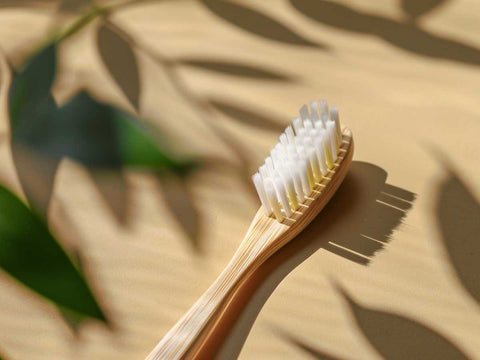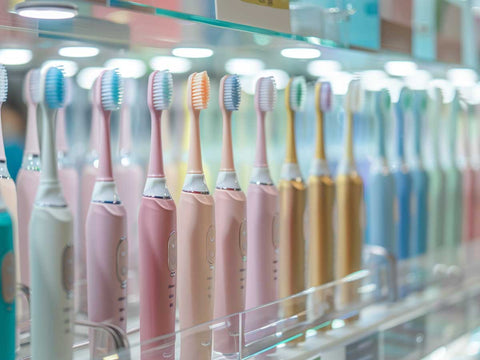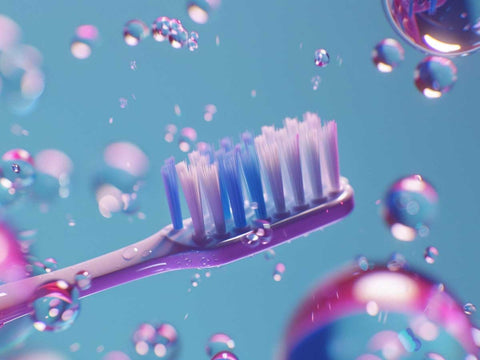Explanation of the importance of oral health and dental hygiene
Maintaining good oral health and dental hygiene practices is crucial for overall well-being. Regular brushing, flossing, and professional cleanings play a significant role in preventing tooth decay, gum diseases, and bad breath. These practices help remove plaque, a sticky film of bacteria, from the teeth, reducing the chances of cavities and tooth loss.
Additionally, oral health is linked to systemic health, with poor oral hygiene being associated with an increased risk of certain health conditions, such as heart disease and diabetes. By prioritizing oral health, individuals can enjoy the benefits of a healthy smile, improved self-confidence, and reduced dental expenses in the long run.
Whether it is brushing twice a day, flossing daily, or visiting the dentist regularly, practicing good oral hygiene habits is essential for maintaining a healthy mouth and a healthy body.
Brief overview of the debate between manual and electric toothbrushes
The debate between manual and electric toothbrushes has been ongoing for years. While manual toothbrushes are the traditional choice, electric toothbrushes have gained popularity and are often recommended by dentists.
Electric toothbrushes offer several advantages. They typically have built-in timers, ensuring that users brush for the recommended two minutes. The oscillating or vibrating motion of electric toothbrushes also helps to remove plaque and food debris more effectively than manual toothbrushes. Additionally, they often have pressure sensors to prevent excessive brushing and potential damage to teeth and gums.
Dentists often recommend electric toothbrushes because they can provide a more thorough and consistent cleaning, especially for individuals with limited dexterity or difficulty brushing properly. The various features of electric toothbrushes make them a convenient, efficient, and potentially more effective tool for maintaining optimal oral hygiene.
Types of Toothbrushes
There are various types of toothbrushes available in the market today, each offering unique features and benefits. Choosing the right toothbrush can greatly impact oral health.
Manual Toothbrushes

Manual toothbrushes are easily accessible and affordable compared to electric toothbrushes. They can be purchased at any local store and are generally more budget-friendly. Additionally, manual toothbrushes are portable and lightweight, making them convenient for travel or on-the-go oral care.
Manual toothbrushes are also effective in removing bacteria and plaque when used correctly. By diligently brushing for two minutes twice a day, manual toothbrushes can help prevent tooth decay and gum disease.
The technique and pressure used while brushing are important factors that can impact the effectiveness of cleaning. It is essential to use gentle pressure and follow a proper brushing technique to avoid tooth and gum damage. Additionally, manual toothbrush bristles may wear out quicker compared to electric toothbrush heads and should be replaced regularly to maintain their efficacy.
Electric Toothbrushes

There are different types of electric toothbrushes available, including rotating, oscillating, sonic, and ultrasonic toothbrushes. Rotating toothbrushes have small, round brush heads that rotate in one direction and then the other, reaching all surfaces of the teeth. Oscillating toothbrushes have brush heads that rotate back and forth, providing a thorough cleaning action.
Sonic toothbrushes use high-frequency vibrations to create a scrubbing motion that effectively removes plaque and debris from the teeth. The brush heads on sonic toothbrushes can vibrate at speeds of up to 40,000 movements per minute, creating a powerful cleaning action. Ultrasonic toothbrushes go even further, using ultrasonic waves to clean the teeth. These waves create tiny bubbles that implode, effectively cleaning between the teeth and along the gumline.
All electric toothbrushes work by using battery or electric power to move the brush heads. The rotating or vibrating brush heads are designed to sweep away plaque and bacteria, providing a more thorough cleaning than manual brushing alone. Many electric toothbrushes also have built-in timers or pressure sensors to ensure that users brush for the recommended two minutes and apply the right amount of pressure.
When choosing an electric toothbrush, there are important factors to consider. The American Dental Association (ADA) seal of approval ensures that the toothbrush has undergone rigorous testing for safety and efficacy.
Description of traditional toothbrushes

Traditional toothbrushes typically have a rectangular or oval-shaped head, with bristles arranged in a flat or slightly tapered pattern. The bristle pattern consists of rows of bristles, which may be straight or angled, and are usually made of nylon. Adult toothbrushes generally have medium to firm bristles which is armful for your teeth, please see the "Importance of soft bristles for oral health" section below ,while children's toothbrushes have softer bristles to accommodate their more sensitive gums.
The head shape should fit comfortably in the mouth, allowing easy access to all surfaces. The bristle pattern should effectively remove plaque and debris without causing damage to the enamel or gums. The bristle stiffness should be suitable to avoid gum irritation or recession.
Adults and children have different oral care needs, so selecting a toothbrush specifically designed for their age group is important to provide the necessary care and comfort.
Advantages and disadvantages of using an electric brush

Advantages of using an electric toothbrush include their ability to provide more consistent and thorough brushing, reducing plaque buildup and the risk of tooth decay and gum disease. Electric brushes often have timers to ensure proper brushing time, and their oscillating or vibrating bristles can reach areas that manual brushing may miss.
However, electric toothbrushes do have some disadvantages. They can be more expensive than manual brushes and require regular charging or battery replacement. Additionally, some people may find the vibrations uncomfortable or the noise off-putting.
Smaller brush heads allow for better coverage, especially in hard-to-reach areas. Other features to consider include pressure sensors to prevent over-brushing, different brushing modes, and compatibility with various brush head replacements.
Importance of soft bristles for oral health

The bristle texture of a toothbrush plays a significant role in effectively removing plaque, debris, and food particles from the teeth and gums.
Soft bristles are gentle on the enamel and gums, preventing any potential damage or irritation. They are particularly beneficial for individuals with sensitive teeth or gums, as well as those with conditions such as gingivitis or periodontitis.
Bristle Texture
There are several options available when it comes to bristle texture in electric toothbrushes:
- Soft bristles are gentle on the gums and teeth, making them suitable for individuals with sensitive gums or tooth enamel.
- Medium bristles provide a balance between gentle cleaning and effective plaque removal.
- Firm bristles, on the other hand, are more suited for individuals with healthy gums and strong tooth enamel, as they can effectively remove tougher stains and debris.
Furthermore, some electric toothbrushes offer specialized bristle textures such as tapered bristles or angled bristles. Tapered bristles are designed to clean hard-to-reach areas and remove plaque between the teeth, while angled bristles can assist in cleaning along the gum line. While these textures can enhance the cleaning experience, they may not be suitable for everyone, especially those with extremely sensitive gums.
Pressure Sensors
Pressure sensors in electric toothbrushes function by detecting the force applied during brushing. Their purpose is to prevent damage to the gums by signaling when excessive pressure is being applied. These sensors measure the force exerted on the brush head and provide feedback to the user.
When the pressure exceeds a certain threshold, the sensor triggers an alert, either through a light or vibration, indicating that the user should reduce the applied force. By incorporating pressure sensors, electric toothbrushes help users maintain proper brushing technique and prevent potential harm to the gums.
Additional Sources
https://www.cochrane.org/CD002281/ORAL_poweredelectric-toothbrushes-compared-to-manual-toothbrushes-for-maintaining-oral-health
https://www.healthline.com/health/dental-and-oral-health/electric-toothbrush-vs-manual


Share:
What Are The Benefits of An Electric Toothbrush?
Are Bamboo Toothbrushes Good?